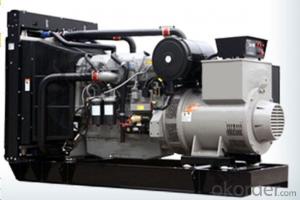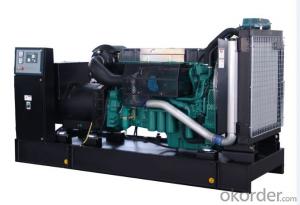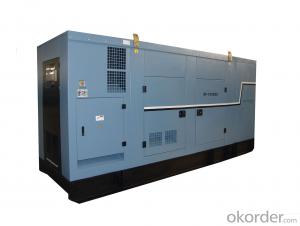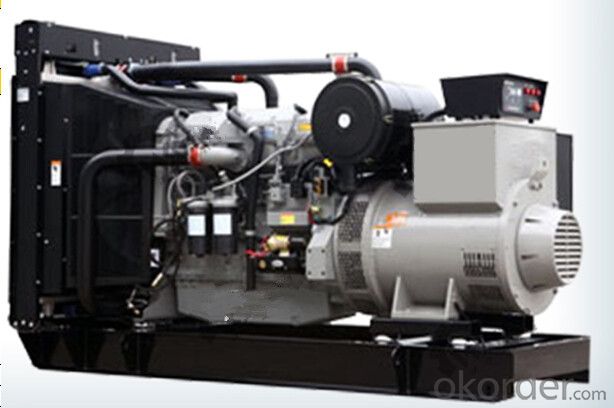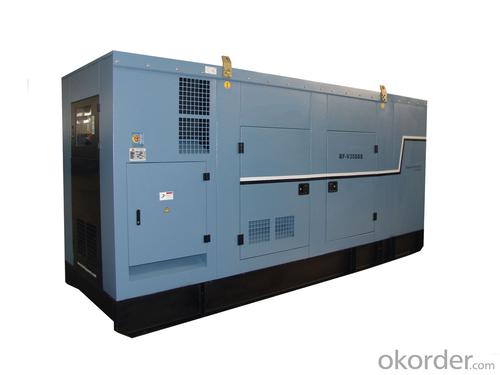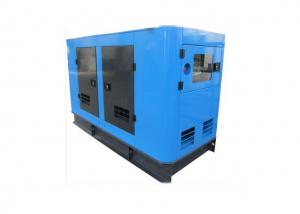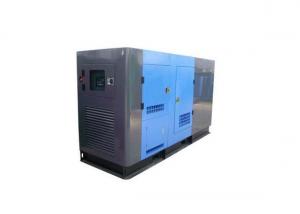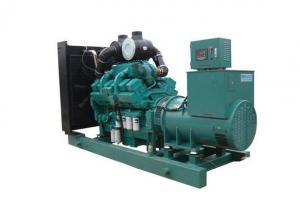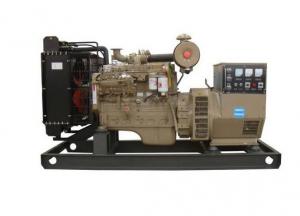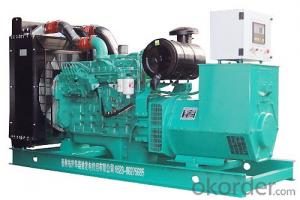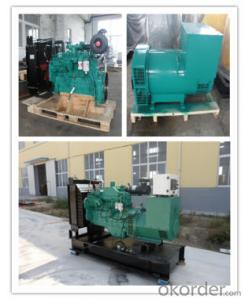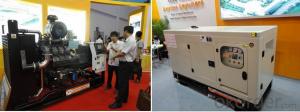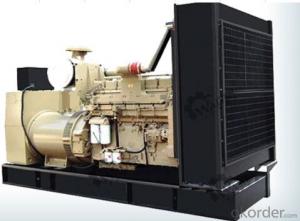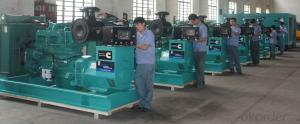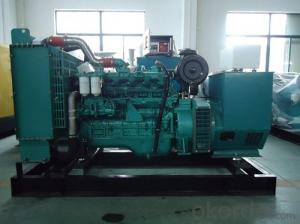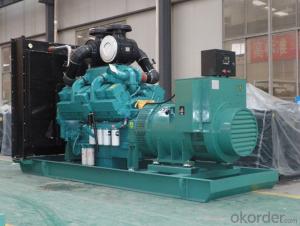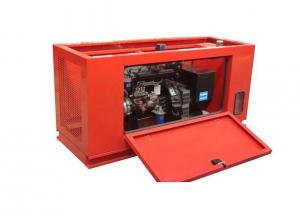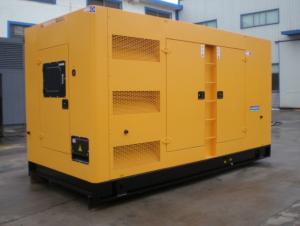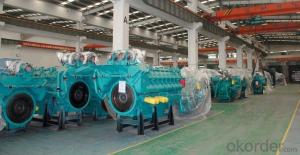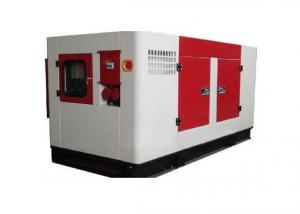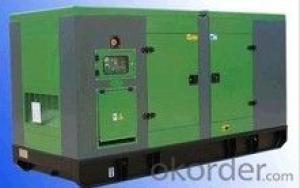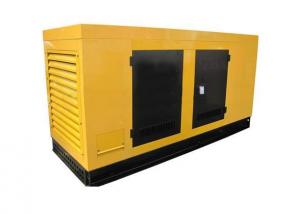Diesel Generator Perkins 320kw/400kva
- Loading Port:
- Shanghai
- Payment Terms:
- TT OR LC
- Min Order Qty:
- 1 unit
- Supply Capability:
- 100 unit/month
OKorder Service Pledge
OKorder Financial Service
You Might Also Like
Product Description
A diesel generator is the combination of a diesel engine with an electric generator (often an alternator) to generate electrical energy. This is a specific case of engine-generator. A diesel compression-ignition engine often is designed to run on fuel oil, but some types are adapted for other liquid fuels or natural gas.
Diesel generating sets are used in places without connection to a power grid, or as emergency power-supply if the grid fails, as well as for more complex applications such as peak-lopping, grid support and export to the power grid.
Main Product Features:
Engine (Perkins Model: 2206A-E13TAG5 )
Radiator 40`C max, fans are driven by belt, with safety guard
24V charge alternator
Alternator: (Marathon Model: MP-320-4), single bearing alternator IP21, insulation class H/H
Absorber
Dry type air filter, fuel filter, oil filter
Main line circuit breaker
Standard control panel
Two12V batteries, rack and cable
Ripple flex exhaust pipe, exhaust siphon, flange, muffler
User manual
Product Specifications:
1. Manufacturer / Model: Perkins Model: 2206A-E13TAG5,4 stroke
2. Air Intake System: Turbocharged, air-to-air charge cooling
3. Fuel System: /
4. Cylinder Arrangement: 6 in line
5. Displacement: 12.5L
6. Bore and Stroke: 130×157mm
7. Compression Ratio: 16.3:1
8. Rated RPM: 1800rpm
9. Max. Standby Power at Rated RPM: 406KWB
10. Governor Type: Electronically
FAQ:
Q1: What is Prime Power and Standby Power Rating?
A1: Prime Power (PRP): Prime power is available for an unlimited number of annual hours in variable load application, in accordance with GB/T2820-97(eqv ISO8528); A 10% overload capability is available for a period of 1 hour within a 12-hour period of operation. Standby Power Rating (ESP): The standby power rating is applicable for supplying emergency power for the duration of a utility power interruption. No overload, utility parallel or negotiated outage operation capability is available at this rating
Q2: How do we guarantee the quality of our products?
A2: We have established an advanced quality management system which conducts strict quality tests at every step, from raw materials to the final product.
Q3: How soon can we receive the product after purchase?
A3: Within three days of placing an order, we will begin production. The specific shipping date is dependent upon international and government factors, but is typically 30 to 40 workdays.
Q4: What is your after sales service?
A4: CNBM provides a full line of brand new and high quality products. Each and every unit is strictly factory tested. Warranty is according to our standard conditions: a, 15 months, counted on the day CNBM sold to the first buyer; b, One year after installation; c, 1000 running hours (accumulated); subject to the earlier one. Service and parts are available from CNBM or distributors in your location.
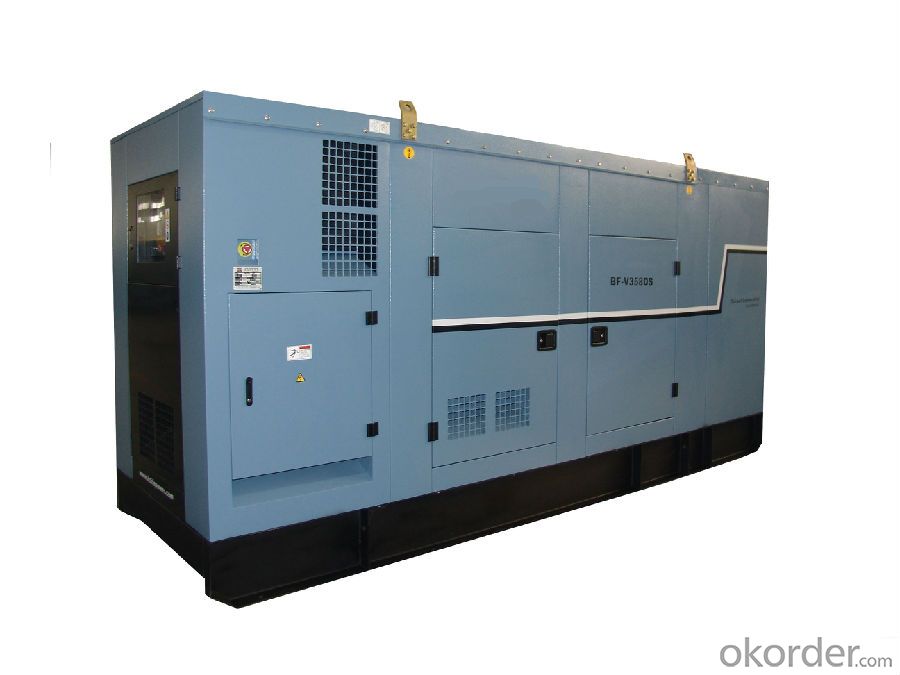
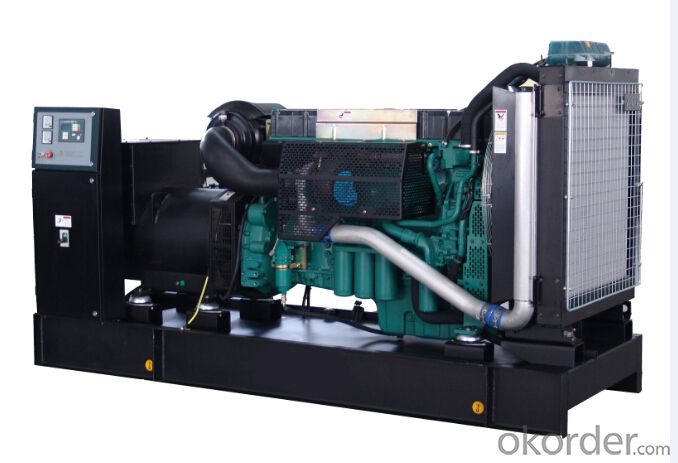
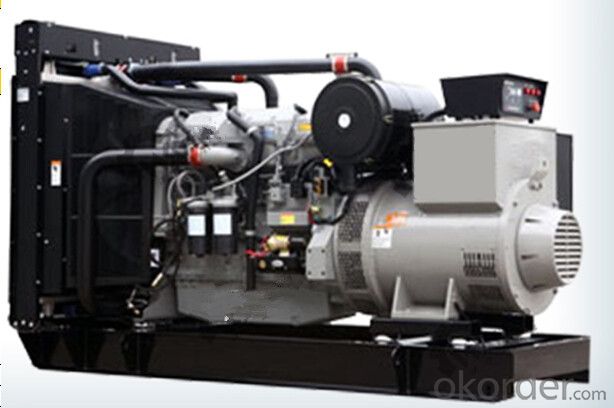
- Q: I live in a remote location and my power bill is just ridiculously expensive -- I did the math and it seems like it'll be way cheaper for me to use my solar panel (which currently supplies DC power to a few parts of the house) and a diesel/oil/propane generator (which I have yet to purchase), and just cut off all mains power.Question is, which of these configurations is better?1)-Solar panel-DC generator-Large battery bank-High-wattage inverterResult: AC power throughout the house, using both solar panel and generator to charge the batteries as needed2)-Solar panel-AC generator-Smaller battery bank (for solar panel only)-No inverterResult: AC power when generator running, DC power from solar panel and batteries (I use DC right now for lights and a few basic appliances so I can live without AC power)Or should I do a combination of both, like using an inverter for the solar panel to always provide AC power?Thanks.
- Solar okorder
- Q: diesel generator
- I'd start with the fuel flow rate, its heating value, an assumed efficiency of a diesel motor and an assumed efficiency of a generator. The diesel motor burns fuel, drives a generator to produce electrical power which is then used to drive electric motors at the wheels.
- Q: I live 30 miles east of Seattle in an area that is frequently without power. Up until this year the outages were less than 48 hours but this year we have had repeated outages, one of which lasted 6 days after a stronger than usual windstorm. I had to scramble to find somewhere else to be. I lost several days of work, all the food in my refridgerator and freezer. At what point does it make sense to just install a standby generator?
- They are really worth it. If you have the money put in an automatic type. If you have natural gas or propane use that for fuel it will save having to fuss with gasoline or diesel fuel. I live in the city but still have a 5000 watt gasoline one I can hook up to the furnace, a couple of lights and the freezer. We had power out for about 14 hours during a ice storm and it worked great. but I had to keep refuelling it every 5 hours or so.
- Q: I am leaving a career as an aviation electrician after 23 years and have applied for a job as a diesel locomotive electrician with Union Pacific. I was notified about a skills test and was hoping to brush up a bit before the test. Which areas should I focus on studying? Also what can I expect on a day to day basis working in this field? And lastly, although I can troubleshoot and wire a jumbo liner in my sleep I don't have specific experience with large generators and motors. How will this affect me in the hiring process. Thanks in advance for any help.
- This Site Might Help You. RE: Can someone tell me about the diesel electrician job? I am leaving a career as an aviation electrician after 23 years and have applied for a job as a diesel locomotive electrician with Union Pacific. I was notified about a skills test and was hoping to brush up a bit before the test. Which areas should I focus on studying? Also what can I expect on a
- Q: I will put this generator to power my automated vehicle which have sensors, servo for the steering, motor for the rotation of the rear shaft, laptop for camera vision etc.
- A battery powered wheel chair has everything you need. You can buy an old one cheap and fix it up to work as your automated vehicle. Use Lithium Ion batteries for maximum power or one of the new AGM car batteries that provide deep discharge operation.
- Q: i started work in a company and i have to maintain a fuel record of diesel generators.i need to know about this term,kindly answer me in good and easy manner and get 10 points.
- As opposed to mileage on a vehicle, the hours meter keeps record of the hours of operation, for servicing, etc.
- Q: I Live way out in the country and have a diesel generator.I want to switch to nuclear because it could be cheaper. I have plenty of land to dispose of any nuclear waste.
- Well, get 20 tons of lead and concrete. Make a steam generator. Make heat source using illegal and expencive radioactive materials. Die from cancer, since you have no idea what youre doing. Im just kidding, just put the uranium right the diesel generator, it will work fine.
- Q: Electricity for all the computers, controls, and sensors and everything. Is electricity for these devices supplied by the nuclear reactor itself, or is it from an outside source? I've heard something about an emergency diesel generator but that's probably something else.
- Credible? How's this I carry a Q point secure practices clearance from the U. S. NRC. I worked in nuclear vegetation for 2 years. the main section of the sequence to generate ability type nuclear capability is the reactor center. in the middle, a self-conserving nuclear fission reaction is going on. The splitting of the Uranium 235 nucleus via a neutron motives the ejection of two neutrons which in turn, splits 2 extra nucleus'. alongside with the neutron ejection is the releases of a extensive volume of capability in the variety of warmth. A coolant, regularly water is circulated below severe tension to this center. The tension facilitates the water to learn warmth capability yet stay a liquid. After the coolant leaves the reactor containment section, the tension is suddenly decreased. This kinds steam, that's used to coach extensive turbines related to the two superb turbines. those create the electrical powered ability. The expended decrease tension steam is condensed and then returns to the middle to do the cycle lower back.
- Q: i found a 1998 dodge ram 2500 with turbo diesel Cummings motor, and people tell me that Cummings is the best to get why is that? would $3300 be worth it for this truck?
- Cummins has a great low end torque, so it can get a load moving pretty good. Inline engines are used in most freight trucks because of this. However, the downside of certian model Dodge trucks was a short lived automatic transmission. Thats why a lot of people went with the 6-speed tranny, which could pull a house. Cummins is also great on top end as far as speed and last just as long. When I was looking for a truck to buy, I was looking for a Ford body with the Cummins swap. I'm not a big fan of the Dodge body style. A Ford crew cab has more space than that of the Dodge REGULAR crew cab. International also builds inline engines that are mainly used in larger vehicles. International (Navistar) has been building diesel engine for the past 175yrs. International stopped building Power Stroke engines for Ford because they could not agree on the price for a length of time. I think Ford's now in house built engine has topped the current version of the Cummins in aspects as far as performance and maintanence. And you couldn't pay me to take a duramax
- Q: I have a generator in the building I am working on. It appears quite dated, but its stats are as follows: it’s a 415 Volt 3 Phase Diesel Generator.On the plate of the generator:415V3 Phase640KVA520KWPower Factor 0.8902 AmpsSo my question is:We are testing the generator to its full load, now my load is at power factor 1. Would I be correct in assuming that because my load is power factor 1 that the full load of my generator is 640kW not 520kW.Or is it that my actual power loading is rated at 520kW, but that load is allowed to be inductive or capacitive to 0.8.Because it says 900 amps on the plate I am therefore under the assumption that regardless of my load characteristics, as long as I do not exceed 900 amps there should be no problem. Or is it a case that my load can only be 520kW and the highest I can allow the phase to go out is up to 640kVA.Hope that makes sense, ill edit if not. Thanks for reading.
- While your generator will handle the amperes as either KVA or KW, unfortunately, the KW rating is is the rating of your driver. You are driver limited, not generator limited.
Send your message to us
Diesel Generator Perkins 320kw/400kva
- Loading Port:
- Shanghai
- Payment Terms:
- TT OR LC
- Min Order Qty:
- 1 unit
- Supply Capability:
- 100 unit/month
OKorder Service Pledge
OKorder Financial Service
Similar products
Hot products
Hot Searches
Related keywords
